Energetic Blueprints and the Role of Humans in Facilitating Patterns of Ecological Harmony
In our third piece on Ecological Attachment Theory, we will explore the idea of eco-energetic patterning, balance in complex systems, and our blueprints for facilitating ecological harmony
Before jumping in, if you haven’t already - please consider reading Parts 1 & 2 of this series, which help lay the foundation for the frameworks and concepts discussed in this piece.
In this piece:
Circling back briefly on the concepts introduced in Part 2 of this series
The Energetic Patterning of Ecological Relationships
Energetic Blueprints and the Role of Humans in Facilitating Patterns of Ecological Harmony
Announcing a community workshop series for February & March: Ecological Attachment Theory in Practice
Sharing my personal story for new readers
Original Land Wounds as Energetic Patterns of Relationship
In Part 2 of this series, we discussed the concept of “original land wounds” as a way to contextualize settler colonialism itself, not only as a cause of fractured land-based relationships, but as a result of fractured land and place-based relationships. I provided a definition for how I personally define original land wounds, which is defined as followed:
“Original land wounds” are energetic patterns of relationship that are passed down from generation to generation and are informed by land-based traumas, resulting in a variety of behaviors, many of which can be identified as functions of settler colonialism or complexes of domination itself. These energetic patterns are like a somatic and psychological blueprint held not only in our bodies, but the collective memory of our peoples or culture. Within this framework, we understand colonialism as both a product and a cause of these land-based traumas.
In short, the fracturing of our land and place-based relationships is a negative feedback loop that is both seeded and perpetuated by land-based traumas.
Today, we will discuss the innate energetic blueprints that shape our relationship to the land, and the role we play in the management of complex ecosystems. By shifting our perspective of why we were created, we can move on to understand how our patterns of relationship to the land have been disrupted or destroyed.
The Energetic Patterning of Ecological Relationships
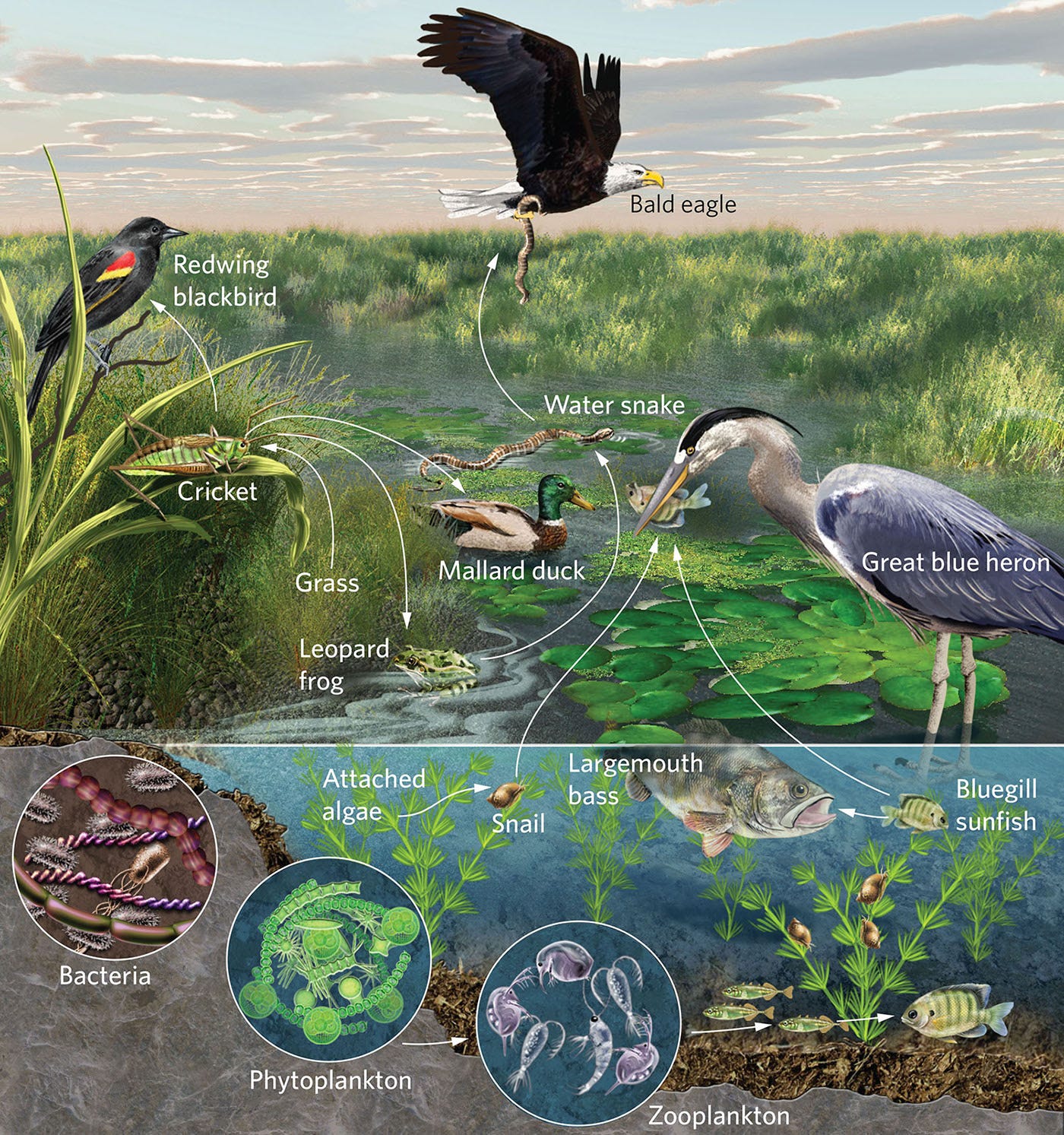
This is something I could spend a lot of time discussing, but I’ll try to provide just enough context to understand the importance of eco-energetic patterning and how it relates to our next topic of land-based traumas.
From a purely Western ecological framework, ecological relationships (also referred to as ecological interactions) are defined as follows:
“Ecological relationships describe the interactions between and among organisms within their environment. These interactions may have positive, negative or neutral effects on either species' ability to survive and reproduce, or "fitness." By classifying these effects, ecologists have derived five major types of species interactions: predation, competition, mutualism, commensalism and amensalism”.
This definition can fit under my personal ethos of eco-energetic patterning, in which ecological systems, in their diverse and respective environments, exist to constantly achieve balance, vitality, and harmony. In order to achieve balance (which is not a static state, but rather a very alive, dynamic state; you can read more of my thoughts on this here), an ecosystem relies on the health and equilibrium of all organisms within that system; furthermore, we can extrapolate that all ecosystem interactions are ultimately energetic in nature - as all Life on Earth is a direct result of its ability to transform solar energy into other forms of energy.
Within an ecological system, life itself is defined as the transfer of energy from one organism to another, or more simply - energy shifting from one state to the next.
From the universal elements of earth, water, fire, and air, to the wetland as a whole, to the blue heron, the growing reeds and cattails, down to the tiniest of organisms such as algae and bacteria growing in the water - all are defined by the transfer of energy and its ability to transform from one state to another. Rooted in this concept, we can define harmony not as complete, static “balance”, but rather as the health & vitality of the overall system and the collective ability of all organisms contained within it to facilitate the energetic interactions needed to sustain life. Eco-energetic patterning is the blueprint for life itself - patterns through which the movement of energy is channeled by the inter-relating of organisms that facilitate the process.
If we consider an ecosystem a complex system of energy exchange facilitated by relationships between organisms, it is their behaviors and interactions with one another that form pathways through which energy can flow; and the more consistent the behavior or interaction, the more entrenched the energetic patterning of that relationship becomes - pathways, over time, become channels. These eco-energetic channels, and the transformation or transfer of energy through them, create a web of relationship through which harmony can be achieved.
I personally believe, that every single organism on this planet has their own eco-energetic patterning that has developed over millenia through their relationships with other organisms.
Where the health of the ecosystem becomes compromised is when the eco-energetic patterning becomes disrupted, resulting in an inability to transform energy from one state to the next - when the imbalances surpass its ability to embody to the blueprints that sustains life. I believe this is at the heart of land-based trauma (which we will continue to talk about in future pieces).
I will share a brief anecdote that will hopefully speak to these energetic blueprints and the trauma that can disrupt the natural patterns of life:
In my neighborhood, they were in the process of restoring wetland. This small patch of wetland, once apart of a thriving slough that flowed into a lake, was more or less completely destroyed by urban development. No more than 2 years ago, they reclaimed the area as a park and began restoration work. Upon visiting frequently last year, I could see how methodical and calculated the creation of this “wetland” was (as often conservation work is), with each bog myrtle plant, snowberry, patch of reeds, and so forth, planted 6 inches apart. They weren’t established plants, and the trees they had planted were no taller than me. It wasn’t a wetland yet - it was urbanized land remembering how to become a wetland. The baby plants, all planted neatly side-by-side were still so young they hadn’t filled all the space between; they hadn’t co-mingled and discovered what their lives would be like in relationship with each other. They hadn’t re-discovered what it was to be in relationship with the many different species of birds, fish, or frogs. Just as us humans forget ancestral wisdom, this little piece of land also forgot its own collective identity - you are a wetland.
I had hope for this little piece of land, no more than 2 or so acres. I felt the land itself, and each plant, and all of them together, reaching to remember who they are; and all of the other organisms who would visit from other parts of the lake - be that the red-winged black bird singing a song, the ducks paddling through the slough, or the grandfather cedar trees that protected the wetland from the cars passing by - they all came to restore the ecological memory of this place.
This is why I feel it is appropriate to define these blueprints as eco-energetic in nature, because an ecosystem’s identity is formed and defined by the patterns of relationship that are contained within it, and subsequently the channels of energy that are established through those relationships. But, when I speak of eco-energetics, I am inclined to emphasize it is more than just DNA. Within our definition, it is important for me to convey that there is something more-than-genetics, more-than-biology, that ties organisms to one another in this way. I reach to grasp the words; it is an ineffable, omnipresent, and spiritual memory, even when the energetic channels between them become disrupted or destroyed. These channels of energy - and thereby relationship & collective identity -have been established over hundreds of thousands, or millions of years.
Much like a riverbed that never ceases to be a riverbed, even long after the water stops flowing through it - I felt that the memory of the wetland was still there, the land had just forgotten. All it needed was to remember.
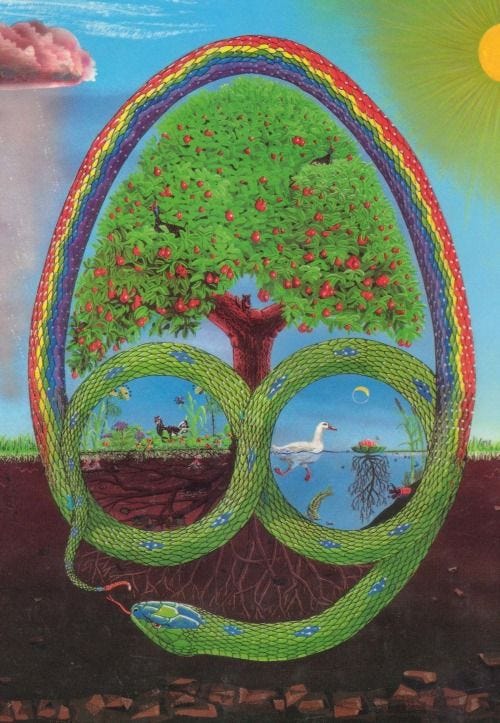
Energetic Blueprints and the Role of Humans in Facilitating Patterns of Ecological Harmony
There is an argument to be made that the modern, Western environmental movement is predicated upon anti-human sentiment. In an effort to protect the environment, Western environmentalism reinforces a dichotomy of exclusivity between “humans” and “nature” - humans bad, nature good. In this context, which seems to leave little room for nuance, humans are the reason for the destruction of our planet. Of course, I am not by any means suggesting that we are not responsible for the state of our planet’s health - and in fact, my ethos around Ecological Attachment Theory is predicated upon the deep acknowledgment of our impact - with the desire to repair our relationship to Mother Earth, of which I feel Ecological Attachment can play a part.
I am not denying the reality of our circumstance - I am arguing against the fabrication of the false human ≠ nature dichotomy.
The evolution of humans was an embodiment of nature’s own evolution, development, and growth process.
To say that all of our development as a species, and the cultural aspects that emerged from that process, is a deviation from nature, reinforces the dichotomy of separation.
Perhaps, we are not the exception to nature, but an expression of it, and that human consciousness as distinct from all other organisms, defined by tool making, food cultivating, art making, and time keeping is the Earth itself making tools, cultivating food, painting horses with clay on the interior walls of a cave, tending fires, and keeping time through storytelling - all of the cultural practices of each community an embodiment of the diverse ecosystems of which they have emerged. I am also of the belief that other organisms have their own ways of cultivating food, of making art and song and dance, and again, in response to their unique environments, genetics, and other factors.
To reinforce the human ≠ nature dichotomy not only denies these truths, but neglects the existence of Indigenous peoples (and traditional cultures around the world) whom are the manifestation of Nature itself embodied in human form.
Most peoples from traditional cultures around the world exist in a worldview in which there is a Creator, and that the creation of humans was, more or less, a deliberate act. While you might make the critique that for me to propose the idea that the creation of humans was a conscious choice on behalf of Nature is inherently anthropocentric, I feel that my animist worldview is not in contradiction to the idea that consciousness is a character trait of nature, just as much as it is a character trait of humans.
Perhaps, Nature created us to purposefully manage its own ecology, to observe and adjust the balance of these complex systems; this is not to say we are the “Hand of God” intervening with nature - but rather we are Nature facilitating the process of achieving deeper harmony with itself.
And in fact, there are examples of this all around the world.
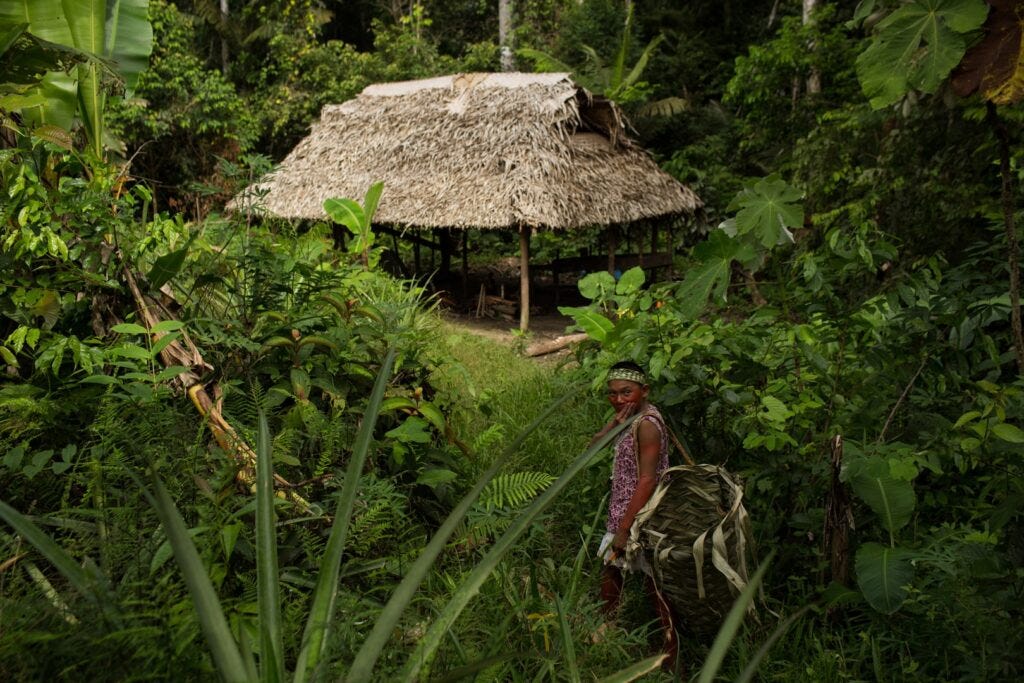
What if I told you that ecological harmony is the blueprint for the energetic patterns that define our relationship with the Earth? Would you believe me?
While many of the consciously managed ecosystems around the world have been irreparably damaged or destroyed by the impact of settler and exploitative colonialism, the Amazon Rainforest is one of the few places on Earth (though it is under the constant threat of deforestation) where we can see the energetic blueprints for human + land relationships, as they were intended, directly applied through human ecological management, resulting in the optimization of complex systems for the facilitation of life. All life. Not just human.
“For centuries, many people in the Western world believed the Amazon to be an unpopulated and untouched forest. This has never been entirely true. Recent research reveals that the Amazon has been managed by Indigenous peoples for thousands of years.
In the past, Western researchers widely considered the Amazon to be an inhospitable environment, unable to sustain large populations due to its poor soil and unsuitability for agriculture.
Neves and other scholars have shown that contrary to earlier beliefs, the Amazon was a center of technological innovation. Their research has revealed that the region was once densely populated by 8 to 10 million people, dating back at least 8,000 years, and probably much longer. The reduced population observed by the first European settlers was likely due to devastating epidemics, such as smallpox, which were brought by the colonists themselves and spread rapidly across the basin, far outpacing their own advance into the region.
A large part of their research focuses on evidence of landscape modifications. Due to the lack of rocks, Indigenous peoples modified the land through other means, such as the cultivation of nutrient-rich dark earth (known as Terra Preta), geoglyphs, raised mounds, and domesticated forests. For the latter, studies have shown how trees were carefully selected over millennia to provide vital resources for forest inhabitants.
Terra Preta, also known as Amazonian Dark Earths, is a focal point of this new research. This extraordinarily fertile soil was widely distributed throughout the Amazon basin as far back as 5,000 years ago and remains a testament to Indigenous peoples’ ability to transform the environment sustainably. While much of the soil in the Amazon has low nutrient density, Dark earths were deliberately cultivated across generations and maintained their nutrients for centuries, demonstrating the deep ecological knowledge and sustainable management practices of the region’s ancient inhabitants, and challenging the notion that Amazonian soils are largely infertile and unable to support large populations.
Meanwhile, other studies show that many dominant tree species in the Amazon—such as cassava, sweet potato, cocoa, pineapple, and some pepper species—are the result of selective cultivation over approximately 12,000 years. [3] This cultivation practice created landscapes of abundance and diversity, in stark contrast with the monocultures and deforestation promoted by modern agribusiness.”

Isn’t it funny that when we see diagrams and infographics of different ecosystems or bioregions - that humans are never included in them? We see the layers of soil, micro-organisms, flora, and fauna, but never humans as organisms within that system. Does reading the story of the deliberate creation of the abundant Amazon Rainforest ecosystem make you curious - why aren’t we included? And how does our exclusion as a species reinforce the human ≠ nature dichotomy?
The Indigenous tribes of the Amazon spent over 10,000 years optimizing their ecosystem to increase the availability of resources for their people, and in turn, created the most abundant, diverse ecosystems on the planet. You might say - well, Marika, humans do these things for themselves, it’s a happy accident that it benefits the overall ecosystem; to which my answer is yes, just like any other organism on the planet, we interact with our environment in a way that ensures our survival, but it is through our conscious management of our regional ecosystems - and the biological mutualism that ties all organisms to one another - that we act as a harmonizer of these complex systems.
As modern humans, we have forgotten the eco-energetic blueprints that Nature has given us… the energetic patterns of behavior that facilitate harmony upon this planet have been disrupted.
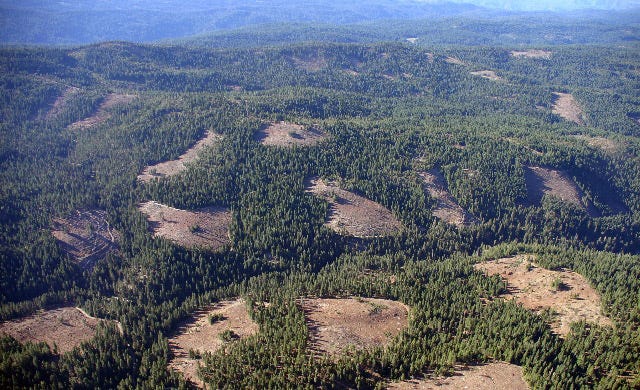
Land-Based Trauma and the Re-writing of Our Blueprints
If you are as concerned about the state of our planet’s health, and realistic about our species’ role in it, you might be thinking to yourself: Well Marika, if we were created by nature to manage its ecosystems, we aren’t doing a very good job.
Ah, yes. Entrez vous, s'il vous plaît, the concept of: land-based trauma.
But don’t you think we’ve covered enough for today? I certainly do. Please stay tuned for the continuation of this series on Ecological Attachment as we begin diving deeper on this concept of land-based trauma (which has been touched on briefly in all previous pieces for this series).
Ecological Attachment Theory in Practice Community Workshop Series Registration Opens January 15th
Please consider joining myself and others in an intimate communal space grounded in individual practice that seeks to support the cultivation of your personal relationship with the natural world. Together, we will engage in a number of tangible practices that seek to support mending our relationships - with the Earth, with our bodies, and each other.
Registration will open next Wednesday, January 15th. I will have a limited number of spaces for the live events, with separate registration for folks who are unable to attend our meetings.
Thank you to all of you - those who delight in my writing, share it with others, engage with my content, pay for subscriptions, or choose to be in a relationship of reciprocity with me and my work. I am not able to share my work with others without your support.
If you aren’t familiar with me and my story, I thought I’d share here as more people discover my work
Hi, I’m Marika. I’m a healer, animist herbalist, musician, woodsman, and single mother 🩷
As a longtime energetic healing practitioner whose maternal lineage comes from a cultural worldview rooted in elemental animism as a way of contextualizing energy as a universally applied understanding of reality, it is intuitive for me to apply the frameworks of energetic patterning (not only as an ecological function of nature but as a spiritual one) to my work. I like to preface with the self reflection that I am not the most knowledgable person by any means, but it is worth mentioning that not all of my work is built on a foundation of ungrounded romanticization of nature, nor philosiphizing on the ideas of ecology without being tangibly qualified to discuss them. I do have an interdisciplinary degree from the University of Washington in Environmental Studies with a focus on restoration ecology among other subjects such as pollinator studies and the intersection of climate & sustainability. I spent most of my 20’s, from 2013-2021 working on and for organic farms producing vegetables, animals, and mushrooms, and I currently work farmers markets for a farm that I worked for from 2017-2021. This is to say: I don’t know everything, but my work is built on the foundation of familial cultural practices and worldviews, a dedication to the study of nature through 4 years of education, and a breadth of professional experience in ecosystem management through the cultivation of food - while also enduring the difficult reality of how farmwork impacted my body, particularly while navigating chronic illness.
Truthfully I haven’t ever really identified as a writer until perhaps the past year. It has become more apparent to me that I seem to have a gift with words, and an ability to articulate ideas that resonate with lots of folks. It is my hope to use this gift to help bridge the gap between our bodies and the land, as a means of healing the Earth, ourselves, and our communities.
Thank you for reading 🩷





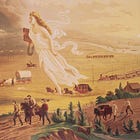



so much resonance to my own work - I always love to find new voices .. thank you
Thanks for another great installment, Marika. When I ponder the coevolution of humans with plants, creatures, fungi, bacteria, and so on... it's impossible not to revel at the natureculture of it all, the planet pulsing as one living, breathing organism. Can't wait to read more!